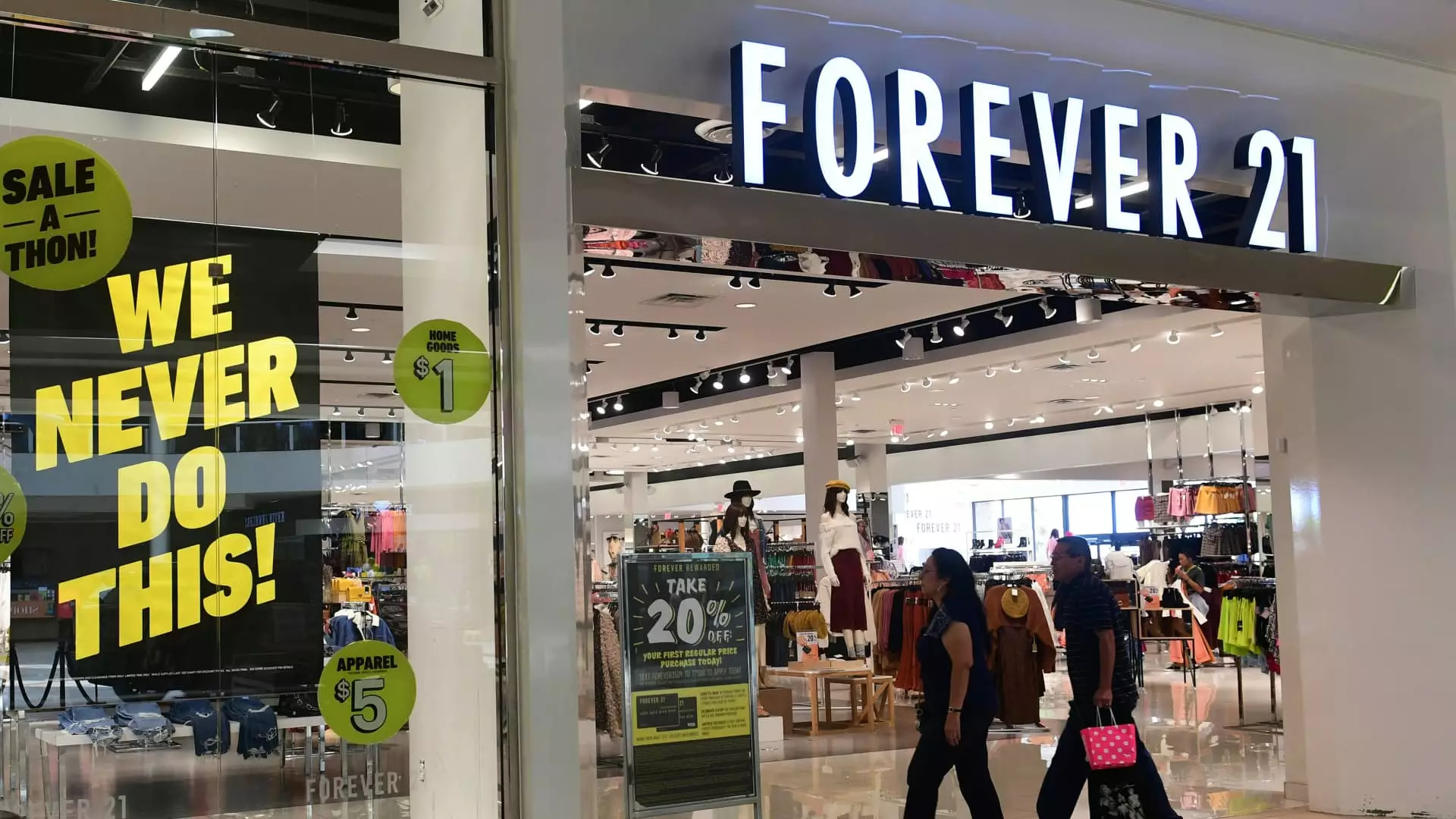Forever 21, a significant player in the fast fashion retail sector, is grappling with severe financial challenges that have led it to enter discussions with liquidators regarding its future. As the company contemplates a potential second bankruptcy filing, it faces fierce competition not only from established rivals but also from innovative e-commerce entities that have transformed the retail landscape. This article delves into the pressing issues facing Forever 21, examines the challenges it encounters in today’s market, and explores potential outcomes as the company navigates these turbulent waters.
As revealed by sources privy to the unfolding situation, Forever 21 is actively exploring options to salvage its operations, including the possibility of liquidation. Recent reports suggest that the company’s initial efforts to find a suitable buyer have led to an unfortunate realization: the fast-paced and ever-evolving nature of the retail market has made it increasingly difficult for brands like Forever 21 to regain their footing. Following a previous bankruptcy protection filing in 2019, which provided a temporary respite by allowing the company to restructure its finances, the vendor has made little progress in adapting to conversion, and it continues to experience significant operational challenges.
One of the most glaring issues facing Forever 21 is its chronic inability to operate profitably. Inventory management has become a persistent headache, and the company’s struggle with cost control has worsened as competition intensifies. With rising tariffs and the loss of brand appeal among younger consumers, Forever 21 finds itself at risk of being eclipsed by more agile competitors.
Emerging rivals such as Shein and Temu are reshaping the fast fashion market, employing sophisticated technologies and data analytics to outpace traditional retailers. These companies capitalize on the advantages of an online-only model, which allows for lower overhead costs and faster response times to consumer trends. Unlike Forever 21, these entities have embedded artificial intelligence in their operations, giving them a significant edge in predicting and meeting customer demands. As a result, they not only capture market share but also set new standards for pricing and convenience that Forever 21 struggles to meet.
The direct partnership that Forever 21 developed with Shein—once seen as a strategic alliance—now raises questions about brand identity and long-term sustainability. Within the context of such partnerships, concerns over whether these collaborations genuinely enhance Forever 21’s market presence persist. In fact, some analysts speculate that Shein could consider acquiring Forever 21’s assets to further assert its position in the U.S. market; yet, due to its lack of experience in traditional retail operations, this remains a contentious issue.
The struggles of Forever 21 are emblematic of the profound changes that have overtaken the retail industry, mirroring the seismic impact of Amazon’s rise in prior decades, which led to wave after wave of bankruptcies and closures across numerous sectors. The proliferation of online shopping has irrevocably altered consumer behavior, with shoppers increasingly favoring speed, variety, and affordability over brand loyalty. This vast shift highlights the plight of retailers burdened with expansive store networks and legacy business models—the very characteristics that once defined Forever 21’s status as a fast-fashion powerhouse.
Moreover, the emergence of brand management firms, such as Authentic Brands Group, has ushered in a new era of corporate acquisitions that significantly alters the traditional brand trajectory. By acquiring the intellectual property of struggling brands, these firms often capitalize on the established value they represent. However, as Forever 21 is already under Authentic Brands’ umbrella, clarity is lacking regarding new potential investors or buyers for the retailer’s remaining assets.
While the discussions surrounding liquidation are certainly critical, it is essential to acknowledge that avenues still exist to avert such outcomes. Forever 21 could successfully negotiate with creditors to restructure its debts or find a buyer willing to invest and revitalize the brand. However, the timeline for action is narrowing, and the company must act swiftly to explore these options.
The plight of Forever 21 serves as a cautionary tale within the broader context of retail evolution. As the brand faces heightened competition and ongoing financial strife, it becomes increasingly evident that mere survival may not be enough. Adapting to a digital-driven market and revamping its strategic approach could be key. If Forever 21 hopes to reclaim its place within the fast fashion realm, it must confront its challenges head-on and explore innovative strategies for engagement and reinvention. The future is uncertain, but the stakes could not be higher.

